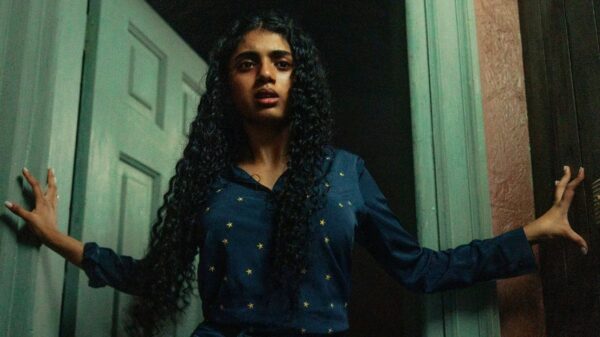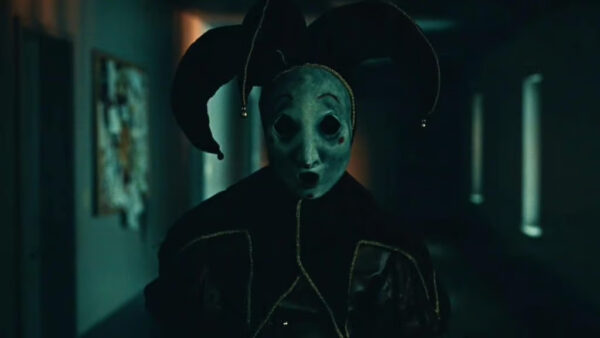
Spenser Cohen and Anna Halberg, the filmmakers behind the wonderful 2022 short ‘Blink‘ debut their first feature as directors, but the cards are not in ‘Tarot’s favour.
I reviewed Tarot on Horror Queers (subscribe to listen), but in short, the Tarot-meets-astrology supernatural horror film has several fatal flaws. Despite a promising cast of relative newcomers, including Avantika and Jacob Batalon, as well as solid creature FX courtesy of Trevor Henderson, Tarot‘s screenplay repeatedly lets it down – not just in terms of plot developments, but also character motivations.
This is particularly evident when it comes to the character of Alma (played by Irish horror vet Olwen Fouéré) who shows up for an extensive expository backstory, disappears for an act, and then reappears to serve absolutely no role in the climax.
Alas the special features fail to offer any light on this baffling character or any of the film’s other script-based issues. Fouéré is the only member of the cast who does not appear in the (admittedly very brief) extras and Alma is the only character that Cohen and Halberg don’t comment on. Perhaps this is due to the fact that the extras were shot before the film’s release (the interviews are clearly being conducted during the film’s press junkets), but Fouéré’s absence is glaring.
The other frustrating element of the special features is that while both Cohen and Halberg praise Henderson’s work and the cast even select their favourite Tarot creature, the film’s best selling feature barely appears. There is no featurette on the creature design, nor are there any behind the scenes footage of the actors (Joss Carter, Felix Leech, James Swanton and Lucy Ridley) on set, in make-up, or in deleted scenes.*
*There are no deleted or extended scenes at all, which – considering the unevenness screenplay – is surprising.

In the “A Twist of Fate: Making Tarot” featurette, Cohen and Halberg name drop Hitchcock, Spielberg and James Wan as inspirations for teasing out tension rather than showing the monsters. Perhaps this explains why so little of the creatures are actually shown?
Nearly all of the horror set pieces in the film, including the much discussed bridge sequence, feel desperate to hide the villains. The result doesn’t play like Cohen and Halberg are obscuring the monsters to increase scares and tension, however; it feels like they don’t have confidence in their creations or they don’t know *how* to shoot action without resorting to jump scares.
Take, for example, the most successful creature: The Fool (see above). His sequence with Batalon’s Paxton isn’t the best in the film, but he is the most effective monster because The Fool can be seen most clearly. Not only is he visible for extended, unobstructed shots, he’s even allowed time on-screen to perform for the camera.

Compare this with The Hanged Man (above). Four of the six cast cite this Tarot creature as their favourite, which is a statement that won’t resonate with audiences because The Hanged Man is barely visible in the film. Clearly the actors responded to *something*, but as a viewer, this answer doesn’t make any sense. With no extras to offer viewers a better view (not even a conceptual drawing!), this is another baffling Tarot element.
Overall Tarot is a disappointment. The screenplay that Cohen and Halberg seem so proud of is a jumble of ideas that don’t cohesively come together, the characters – while sometimes fun – are wildly inconsistent, and the climax is a confounding mess. Given the film’s slapdash approach to its titular subject, it’s something of a surprise to hear that real-life astrology and Tarot expert Angie Banicki signed off on the script.
Sadly the extras fail to do more than provide a hollow PR spin on the production. Is it interesting to hear that the young cast gelled like real friends when they met in Serbia three weeks before filming began? Sure, but that’s as deep as the extras go. The same can be said of the film.
Final Score:
- Film: 2/5
- Extras: 1/5
Tarot is now available on Blu and VOD